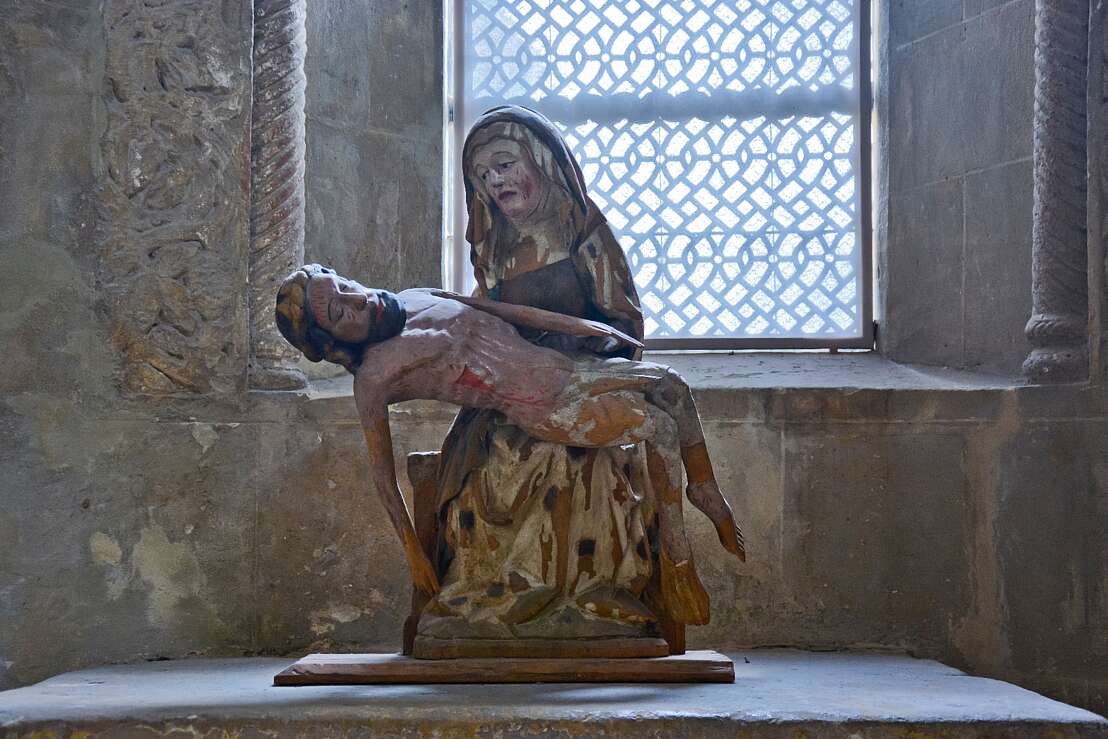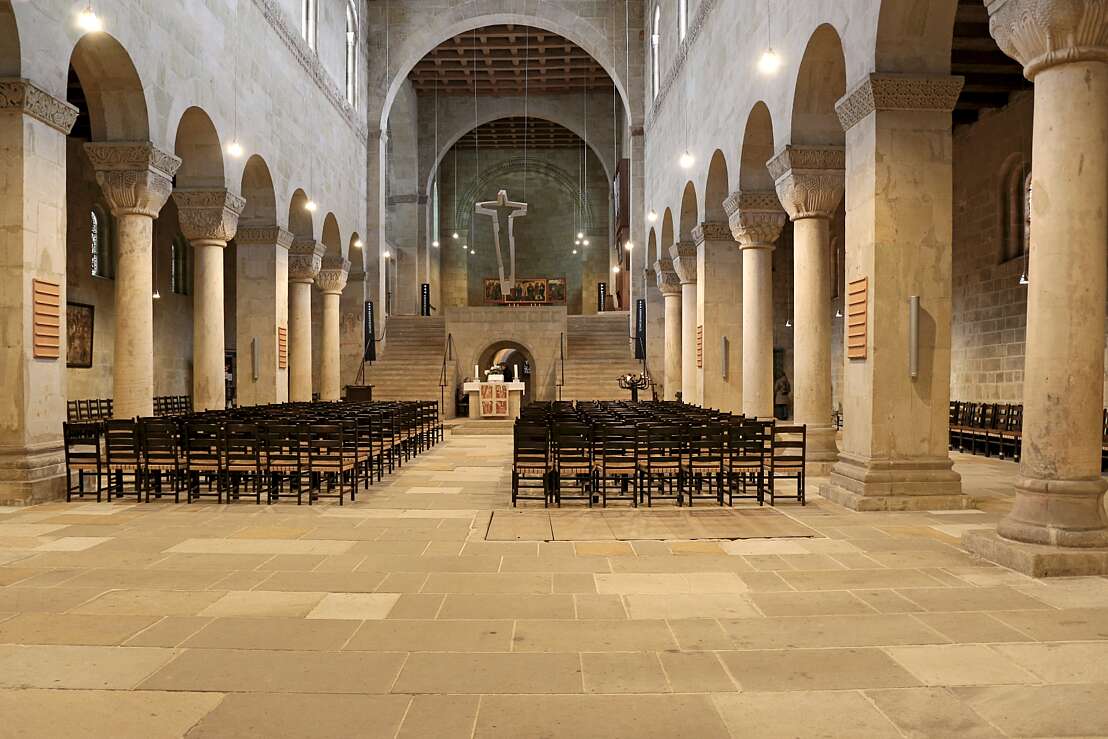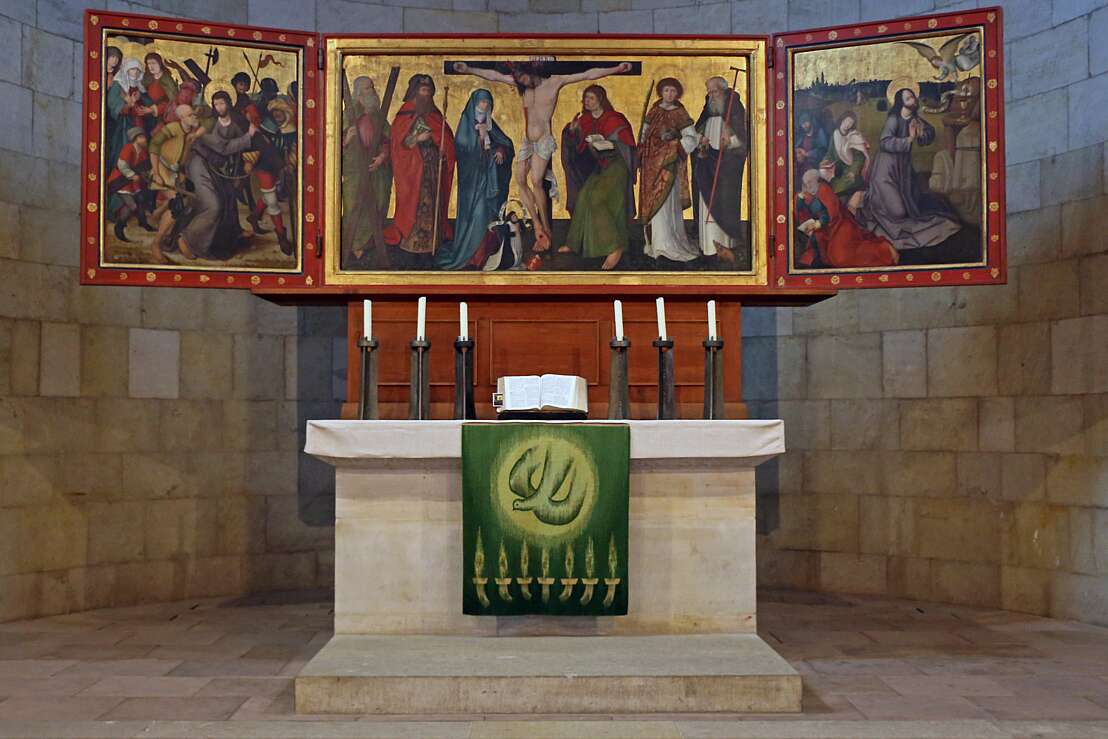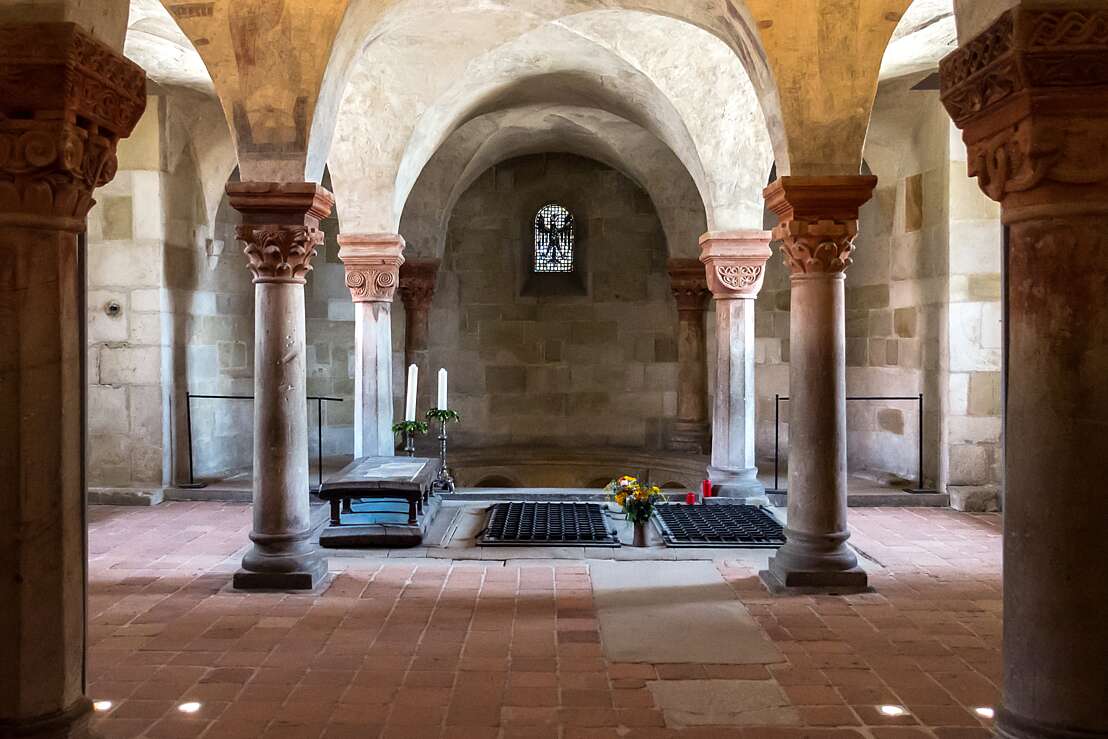Stiftskirche St. Servatii Quedlinburg
The church on the Schlossberg
UNESCO World HeritageHarzspots Vacation planner
| Name | Date |
|---|
The beautiful Collegiate Church of St. Servatii is located in the heart of the city of Quedlinburg, which was declared a Universal Heritage of Humanity in 1994 thanks to its unique historic city centre. Due to its history, beauty and splendour, it contributed significantly to the exceptional value of Quedlinburg's old town, which is highly appreciated by visitors.
The historic church building was dedicated to Saints Dionysius and Servatius after its construction. Saint Dionysius, who later became the first bishop of Paris, lived in the 3rd century AD and was active as a missionary in Gaul until the Roman governor finally ordered his arrest and beheading.
Shortly before his death, Jesus appeared to the saint during communion and blessed him. After his beheading, a miracle occurred, the saint took his head and carried it several kilometres to his burial place. Saint Servatius, who is buried in Maastricht Cathedral, was appeared to by Peter, who warned him of the invasion of the Huns.
The history of Quedlinburg's collegiate church is long, exciting and full of brilliant highlights. The church building was erected as early as the early 10th century; the German king Henry I commissioned the place of worship around 916.
In 936 he was laid to rest in the Palatine Chapel, whereupon the king's widow decided to found a high noble ladies' foundation next to the Quedlinburg collegiate church. Since then, the monastery has been closely associated with the Ottonian ruling family and it was a tradition for the Ottonians to come to Quedlinburg to visit the tomb of Henry I.
Over the centuries, many different kings and emperors came to this place and brought gifts, so the art treasures in the church treasury grew steadily. Today, the treasury of Quedlinburg Collegiate Church is world-famous and an impressive testimony to church history.
The ornate gifts of the kings consist of venerable relics in precious containers, sculptures and carvings made of ivory and fine goldsmith's work as well as cut crystals from the Orient.
Many art experts also value the hand-knotted carpet in the collection, as it dates back to the 12th century, making it the oldest known carpet in Europe. Other highlights of the collection are the ancient scriptures that are still used in liturgy today.
Image rights of the interior photographs:
Nave and 3-part altar - © Vincent Eisfeld / nordhausen-wiki.de / CC-BY-SA-4.0
Crypt - NoRud Creative CommonsAttribution-Share Alike 3.0 Germany
Schlossberg 1g
06484 Quedlinburg
Harzspots gives you the
Komoot Harz Region Package for free!
Use our voucher from the Outdoor Navigators Komoot and get the „"Harz Regions Package“ free of charge. From now on you can get to know all hiking and cycling routes digitally and, if you wish, also voice-guided!





